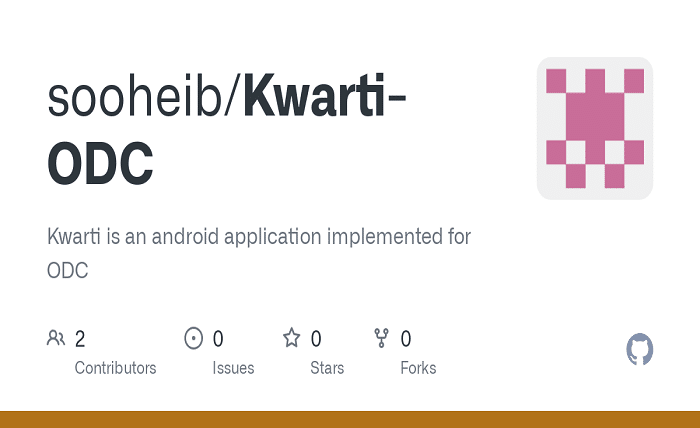Kwarti: Everything You Need to Know

Introduction
Kwarti is a term that resonates deeply in various cultures and has multiple interpretations depending on the context. For some, Kwarti represents a traditional concept, while for others, it might be linked to modern practices or even regional dialects. Understanding the multifaceted nature of Kwarti requires diving into its historical roots, cultural implications, and how it continues to influence contemporary society. In this guide, we will explore Kwarti from every angle, shedding light on its significance and why it remains relevant today. Whether you’re familiar with Kwarti or encountering the term for the first time, this comprehensive overview will provide a thorough understanding of what Kwarti truly means.
The Origins of Kwarti
To fully grasp the meaning of Kwarti, it’s essential to look back at its origins. Kwarti is believed to have emerged from ancient traditions, where it played a crucial role in daily life and rituals. The etymology of Kwarti can be traced to several linguistic roots, indicating its widespread use and importance across different cultures. Exploring the origins of Kwarti gives us insight into how it was perceived in the past and how those perceptions have shaped its current understanding. This historical perspective on Kwarti allows us to appreciate its depth and the rich heritage it carries.
Cultural Significance of Kwarti
Kwarti holds significant cultural value in many societies, symbolizing various aspects of life, including spirituality, community, and identity. In some cultures, Kwarti might be associated with specific rituals or ceremonies, while in others, it could be linked to art, music, or storytelling. The cultural significance of Kwarti is evident in the way it is celebrated, preserved, and passed down through generations. By examining the cultural importance of Kwarti, we can better understand the role it plays in shaping the collective consciousness of a community. Kwarti is not just a concept; it is a living tradition that continues to inspire and influence.
Different Forms of Kwarti
Kwarti is not a monolithic concept; it exists in various forms, each with its unique characteristics and applications. Some may encounter Kwarti in a physical form, such as artifacts or objects, while others might experience it as an abstract idea or practice. The different forms of Kwarti reflect its versatility and adaptability across different contexts. Understanding these variations helps us see the full spectrum of what Kwarti encompasses and how it can be interpreted differently depending on the situation. Whether tangible or intangible, Kwarti in all its forms offers a glimpse into the diverse ways it is understood and valued.
Kwarti in Modern Times
While Kwarti has deep historical roots, it has also evolved to remain relevant in modern times. Today, Kwarti might be seen in new contexts, such as technology, fashion, or contemporary art. The adaptation of Kwarti to fit the modern world demonstrates its enduring appeal and significance. By exploring how Kwarti has been reinterpreted and integrated into today’s society, we can appreciate its continued impact and relevance. Modern-day Kwarti may differ from its traditional forms, but it still carries the essence of its origins, connecting the past with the present in meaningful ways.
The Influence of Kwarti on Art and Design
Kwarti has had a profound influence on art and design, inspiring countless creators across different mediums. From traditional crafts to modern architecture, the principles of Kwarti can be seen in various artistic expressions. The aesthetic value of Kwarti, combined with its cultural significance, makes it a powerful source of inspiration for artists and designers. By analyzing the influence of Kwarti on art and design, we can understand how it contributes to the creation of works that resonate with both cultural heritage and contemporary sensibilities. Kwarti, in this context, serves as a bridge between tradition and innovation.
Kwarti and Its Role in Education
Education is another area where Kwarti plays a vital role, especially in the context of cultural education and heritage preservation. Teaching Kwarti in schools or through community programs helps keep the tradition alive and ensures that future generations understand its importance. The role of Kwarti in education goes beyond just passing on knowledge; it is about fostering a sense of identity and belonging. By incorporating Kwarti into educational curricula, educators can provide students with a deeper appreciation of their culture and history. This section explores how Kwarti is integrated into learning environments and its impact on cultural education.
Kwarti and Community Building
Kwarti has always been a tool for community building, bringing people together through shared practices, beliefs, and values. In many cultures, Kwarti-related activities are communal events that strengthen social bonds and foster a sense of unity. The role of Kwarti in community building is crucial, as it helps maintain the social fabric and supports the preservation of cultural traditions. By participating in Kwarti-related activities, individuals contribute to the collective identity of their community, reinforcing the importance of solidarity and cooperation. This section delves into how Kwarti continues to play a central role in community life and its significance in promoting social cohesion.
Kwarti and Its Impact on Identity
Identity is closely tied to Kwarti, as it represents not only cultural heritage but also personal and collective identity. For many, Kwarti is a source of pride and a way to connect with their roots. The impact of Kwarti on identity can be seen in how individuals express themselves, their values, and their connection to their culture. Whether through language, customs, or traditions, Kwarti shapes the way people see themselves and their place in the world. By exploring the relationship between Kwarti and identity, we can better understand how cultural practices influence self-perception and the formation of identity.
The Preservation of Kwarti
Preserving Kwarti is essential to maintaining the cultural heritage it represents. Efforts to document, protect, and promote Kwarti are vital to ensuring that it is not lost to time. Preservation can take many forms, from recording oral traditions to conserving artifacts and promoting cultural practices. The preservation of Kwarti is a collective responsibility, involving individuals, communities, and institutions. By understanding the importance of preserving Kwarti, we can take steps to safeguard it for future generations. This section discusses the various approaches to preserving Kwarti and the challenges faced in these efforts.
Challenges Facing Kwarti Today
Despite its enduring significance, Kwarti faces challenges in the modern world, including globalization, cultural homogenization, and the loss of traditional knowledge. These challenges threaten the survival of Kwarti, making it more important than ever to take active measures to protect it. Understanding the challenges facing Kwarti today helps us recognize the obstacles that must be overcome to ensure its preservation. By addressing these challenges, we can work towards a future where Kwarti continues to thrive and enrich the lives of those who practice and appreciate it. This section examines the specific issues that pose a threat to Kwarti and the strategies being implemented to combat them.
The Future of Kwarti
Looking ahead, the future of Kwarti depends on our ability to adapt and preserve it in the face of changing times. The continued relevance of Kwarti will require innovation and a commitment to keeping the tradition alive. The future of Kwarti is bright if we can find ways to integrate it into modern life while respecting its origins. This section explores potential developments in the practice and understanding of Kwarti and how it can continue to play a vital role in the cultural landscape. By envisioning the future of Kwarti, we can ensure that it remains a living tradition for generations to come.
Conclusion
In conclusion, Kwarti is a multifaceted concept with deep cultural roots and modern relevance. Understanding Kwarti requires exploring its origins, cultural significance, and the various forms it takes. From its influence on art and design to its role in education and community building, Kwarti continues to be a vital part of cultural identity. Despite the challenges it faces, the preservation of Kwarti is crucial to maintaining the cultural heritage it represents. By embracing both tradition and innovation, we can ensure that Kwarti remains a vibrant and meaningful part of our world.
FAQs
1. What is Kwarti?
Kwarti is a term with various meanings depending on the context, often related to cultural practices, traditions, or objects with deep historical significance.
2. Why is Kwarti important?
Kwarti is important because it represents cultural heritage, identity, and traditions that have been passed down through generations, playing a vital role in community building and personal identity.
3. How is Kwarti preserved?
Kwarti is preserved through documentation, conservation of artifacts, promotion of cultural practices, and education, ensuring that it continues to be passed down to future generations.
4. What challenges does Kwarti face today?
Kwarti faces challenges such as globalization, cultural homogenization, and the loss of traditional knowledge, which threaten its survival and relevance in the modern world.
5. How can Kwarti be integrated into modern life?
Kwarti can be integrated into modern life by adapting traditional practices to contemporary contexts, promoting cultural education, and ensuring that it remains relevant to current and future generations.




